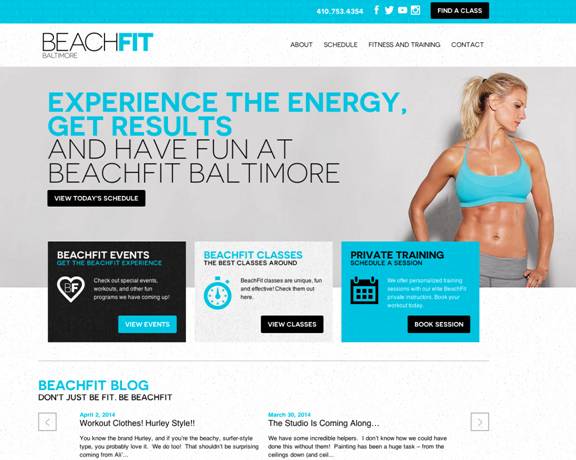It’s estimated that the average American sees between 200 and 300 branding and advertising messages per day. When creating a digital marketing strategy, closely considering design helps set you apart from your competition, and helps your brand stay memorable to customers. How you design your website, advertisements, and products all communicate a set of values about your company. So, how can you ensure that the design you choose positively impacts your brand identity?
Let’s start by defining what a brand is, and isn’t:
- A brand is the set of ideas customers have about what your company stands for. A successful design is one that indicates your company’s personality and values to your target audience.
- A brand is not just a logo! While a logo is a very important part of your brand, you can’t simply slap a cool logo on your company website and call it a day. The logo should work with the other visual aspects to achieve the vibe you want your customers to associate with your company.
- A brand is made up of a brand identity system. Logos, colors, images, typography and layout are all part of your brand identity system – they are visual cues that work together to convey your company’s personality.
- This final point is crucial, and something that many don’t realize or fail to execute. When it comes to branding, your content should match the tone and objective set by your design.
Not everyone is an artist, but if you are in charge of branding your business, it’s important to think like one. The core purpose of design is to elicit a specific emotional reaction from your customers. All of the decisions you make in the design process (and there will be many!) should support what you want your customers to feel.
Many companies have shifted their design to be all about the image. We’re talking large, eye-catching images front and center on a webpage, rather than the lengthy content of yesteryear. In many cases, this gets fantastic results. A good image or photo can have an instantaneous emotional impact on viewers. They associate these feelings with what your brand stands for. Sage Island created an image-centric new Web design for The Annex, a Wrightsville Beach outfitter:

The luxurious black and white photography radiates a youthful vibe, and also showcases the store’s beachy apparel. It’s a good example of using images strategically, based on specific brand objectives.
Colors are also extremely important, as emotions are already built into them. For example, think about the clean white background and cool blue or green logo design of a health care provider. Now contrast that with the red-heavy design of a fast food restaurant. Each one evokes a very different emotional reaction. The color scheme you choose tells customers a lot about you without you having to say it directly through messaging. For example, when Sage Island was asked to design a website for new fitness center Beachfit Baltimore, we decided to accentuate with just the right shade of cyan blue.

The color scheme is not only eye catching, but also conveys energy, freshness and youth. We wanted to suggest that a workout at BeachFit Baltimore would be vibrant and friendly. This shade of blue also matches the walls in BeachFit Baltimore, which helps customers make a connection between the website and the space itself (that’s branding!).
Layout is a part of the design aesthetic too. Although it is generally the realm of programmers rather than designers, it’s still an artistic choice that should be made with your brand’s objectives in mind. Beyond visuals, how your site is organized says a lot about your company. A health care website, for example, would likely want a clean, traditional layout, as it suggests trust and order. But plenty of other types of businesses can think outside the box with their layout to engage users and indicate what they stand for.
On Coastal Beverage Company’s new website, for example, we decided to put the menu in a unique block format in the center of the page, suggesting modernity and an innovative spirit. It also gave us the opportunity to associate the menu content with Instagram-inspired coastal images. To ensure use by the widest audience possible, we put the menu along the top as well for maximum functionality.

When it comes to brand identity, it’s important to leverage good design across all platforms, networks and collateral. Even social media. On your company’s Facebook and Twitter profiles, using the logo, images and color scheme your company is known for will make users feel like they are still with your brand, even though they’ve left your website.
You should plan to redesign your brand periodically – it’s a huge part of staying relevant in your industry. While you don’t want to blindly follow trends, it’s important to keep your look contemporary while staying true to your company’s values and personality.
Mike Duncan co-founded Sage Island in 1997, and since then has evolved the agency’s scope to include marketing strategy, creative design, technical development and a wide range of digital marketing services. With an integrated approach that leverages the power and measurability of the internet, the savvy Sage Island team develops strategies, builds brands, writes killer copy and delivers to clients all over the world. And they have an awesome time doing it. Sage’s collaborative working environment keeps creativity and innovation at the heart of the concept. With a 17-year history in Wilmington and beyond, Sage Island shows no signs of slowing down. To learn how Sage Island can grow your business, check us out at www.sageisland.com. To stay updated on the latest in digital marketing, follow Sage Island on Facebook at www.facebook.com/SageIsland, and on Twitter at twitter.com/SageIsland.






